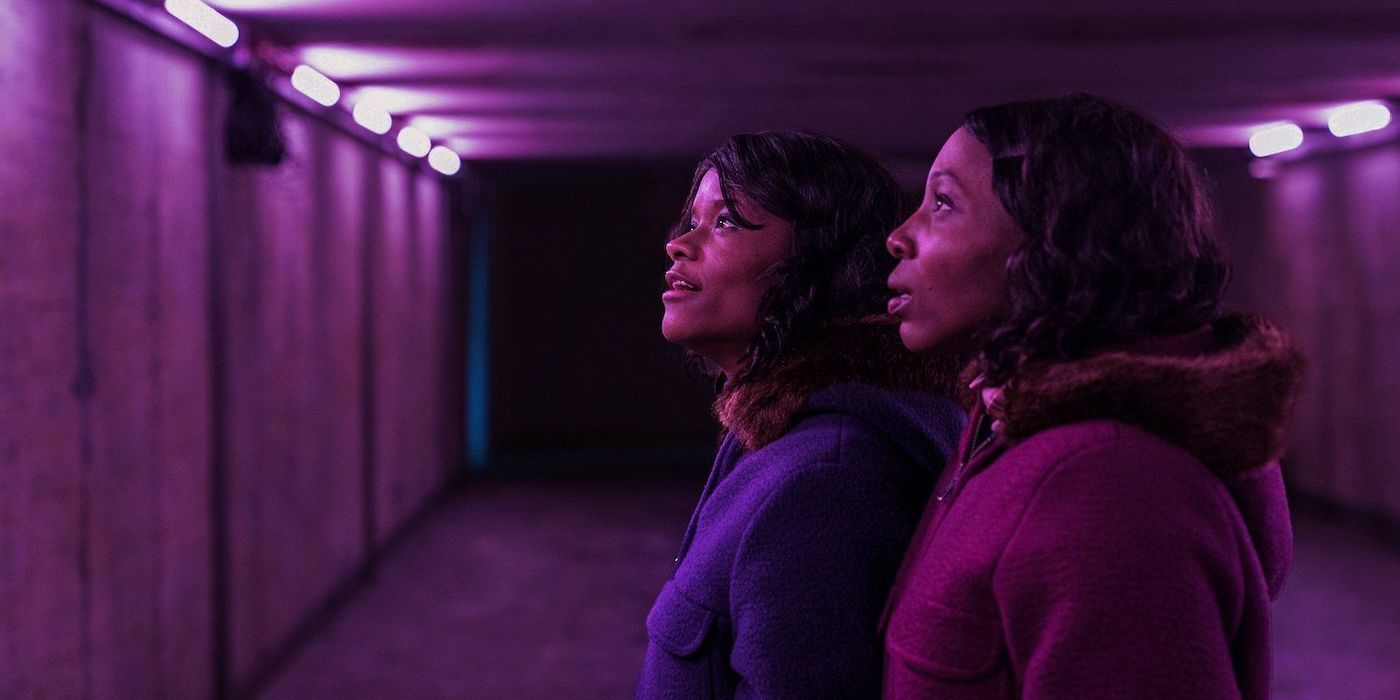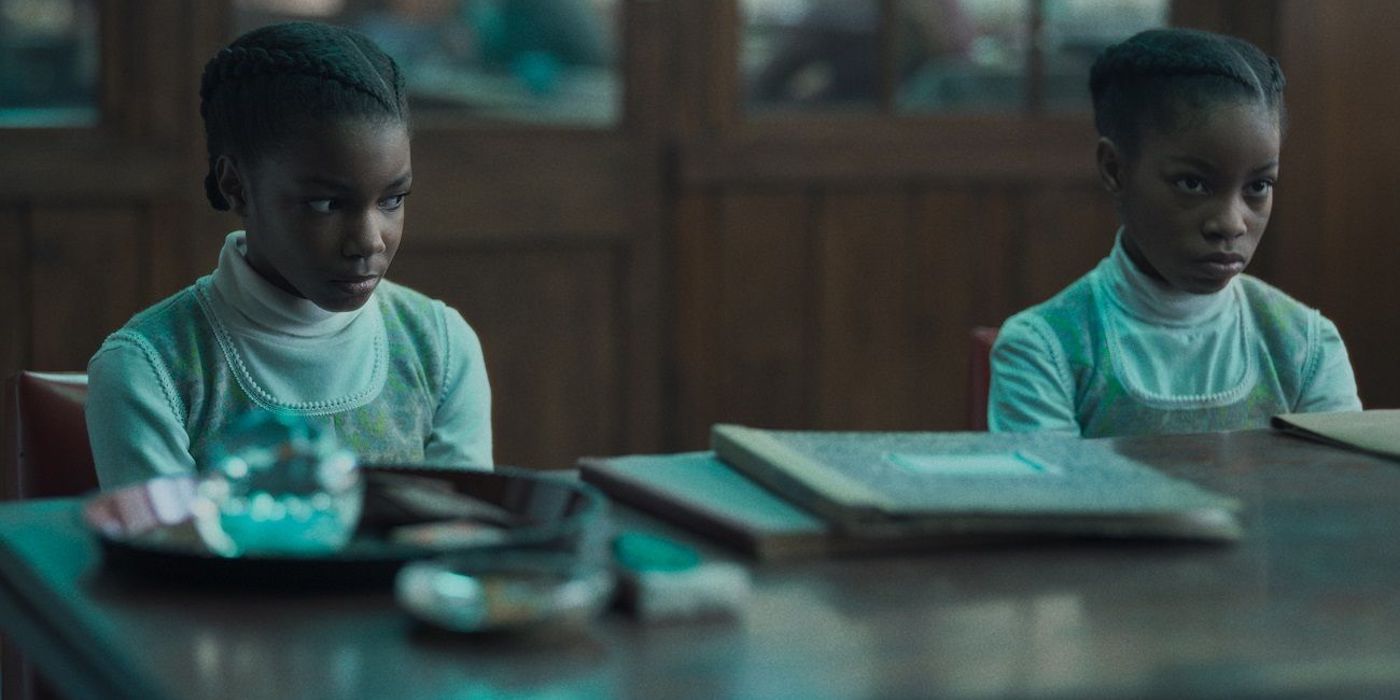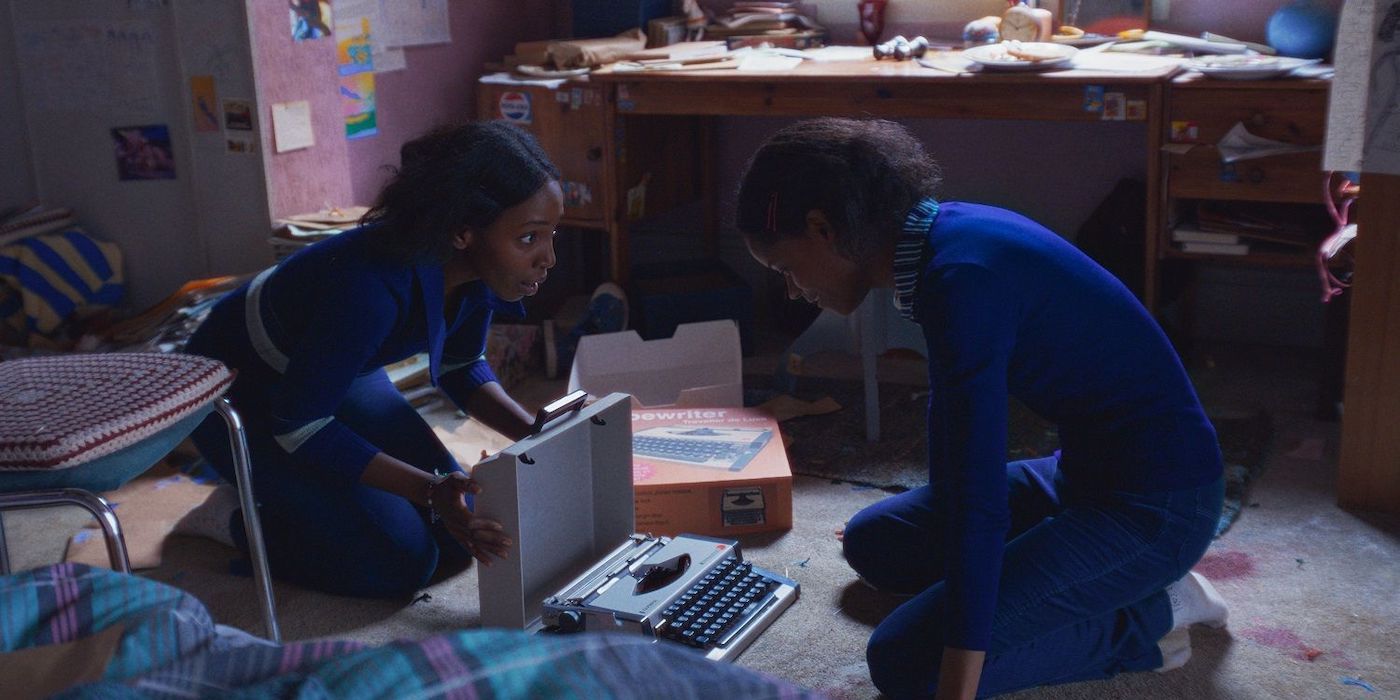There’s a certain pressure that comes with developing movies centered around real-life people and events. Due to the importance of providing a balance in both education and entertainment, filmmakers often struggle to do so appropriately while staying true to their subjects’ stories. The latest under scrutiny is director Agnieszka Smoczyńska’s feature on June and Jennifer Gibbons — sisters who mostly only communicated with each other. Adapted from Marjorie Wallace’s 1986 book, the film offers insights into the creative world in which the twins wrapped themselves. But by focusing mostly on one aspect of their story, The Silent Twins comes off as one that refuses to give truth to the sisters’ disturbing reality.
June (Letitia Wright) and Jennifer (Tamara Lawrance) Gibbons are Black identical twin sisters who grew up in a small town in Wales. Early life experiences, like overwhelming bullying and racism in school, contributed to their withdrawal from society and reliance on each other. At one point, June and Jennifer refused to speak to anyone but each other. They developed their own language and even became catatonic when separated. Growing up in a state of pure dependency and separation from the outside world, the twins eventually turned to a life of crime. Ultimately, this led them to Broadmoor, an infamous psychiatric hospital in Berkshire, England, where they’d have to separate and survive or die, bound by their allegiance to each other.
In her English-language feature debut, Agnieszka Smoczyńska directs an unsettling and revealing tale about twins whose withdrawal from the world facilitated the creation of an exclusive life of silence, seclusion, and imagination. Unfortunately, the script, written by Andrea Seigel, doesn’t do justice to the Gibbons’ story. This is partly due to its source material. Wallace’s novel is the inspiration behind the film adaption, but it doesn’t give enough insight into the troubles that June and Jennifer truly faced. As a result, the screenplay adaption feels underbaked, refusing to give enough information up front about why the twins resorted to a life of isolation.
Part of the reason the script feels underdeveloped is that Seigel provides an outsider’s frame of reference most of the time. Crucially, not much time is spent exploring their earlier years to provide insight into the dynamics of the family and the magnetic pull between June and Jennifer. What led them towards promising each other a life of devoted internal communication, save a select group of people? The movie is extremely vague in answering this question, glossing over important issues the twins faced as children, and the end result is a misguided narrative that entertains yet fails to educate.
The institutionalized and social racism and discrimination to which June and Jennifer were subjected is overlooked. Yet, June, during an interview for the documentary Without My Shadow, admitted that this had a deep effect on the sisters. That, in combination with everyone’s inability to understand them due to a speech impediment led to their willingness to only communicate with each other and certain people. Unfortunately for viewers, a lot of this information is not presented in The Silent Twins. Was this intentional? Or is this a simple instance of omission by admission due to not understanding those burdens? Neither case is good, and the film certainly suffers for it.
Seigel and Smoczyńska also painted the prettiest possible picture of a dark and unfortunate reality that the twins faced. They were wonderfully creative and founded themselves a world in which they could exercise their imagination and artistic nature. Their stories and poems were ways for them to design a world in which they felt like they belonged when the real one didn’t. But because of the concentration on this side of the Gibbons twins, other things took a backseat in the storytelling. But June and Jennifer were like everyone else. They wanted to belong, and they wanted to be understood. However, they had pent-up frustrations when these problems ceased to exist, as reported in their diaries. But again, viewers will find themselves treated only to a glimpse of these things.
There are moments throughout The Silent Twins that will still keep viewers engaged despite the limitations of the script. The acting, from both Black Panther's Letitia Wright as June and Tamara Lawrance as Jennifer, is a particular standout. Their commitment to delivering intriguing performances as troubled twins elevates this weak script and enables viewers to become fixated on what was happening to them. Additionally, cinematographer Jakub Kijowski takes full advantage of Jagna Dobesz's imaginative and mesmerizing set design. Their work enables viewers to fully immerse themselves in every environment and circumstance that June and Jennifer find themselves.
Ultimately, the execution of The Silent Twins proved to be a challenge for the filmmakers. While there is plenty of entertainment within the film to keep viewers engaged, most of that is due to the intriguing nature of June and Jennifer Gibbons’ story. Wright and Lawrence give tremendous performances as the two sisters trapped in their own creative reality. However, the script simply lacks the foundation it needs to explore their internal struggles with themselves and each other. Smoczyńska and Seigel’s interpretation of such delicate information leaves much to be desired, but at least their feature acts as a love letter towards the twins’ true creative genius.
The Silent Twins released in theaters September 16. The film is 113 minutes long and rated R for language, drug use, disturbing material, nudity, and some sexual content.




.jpg)